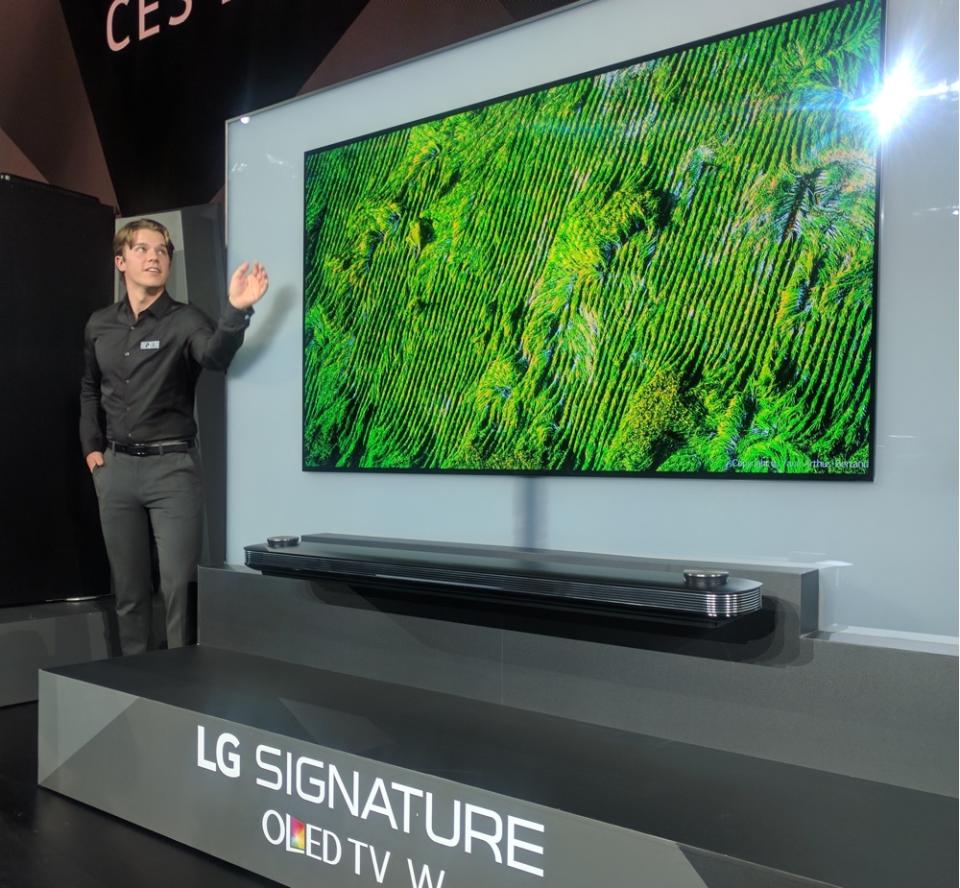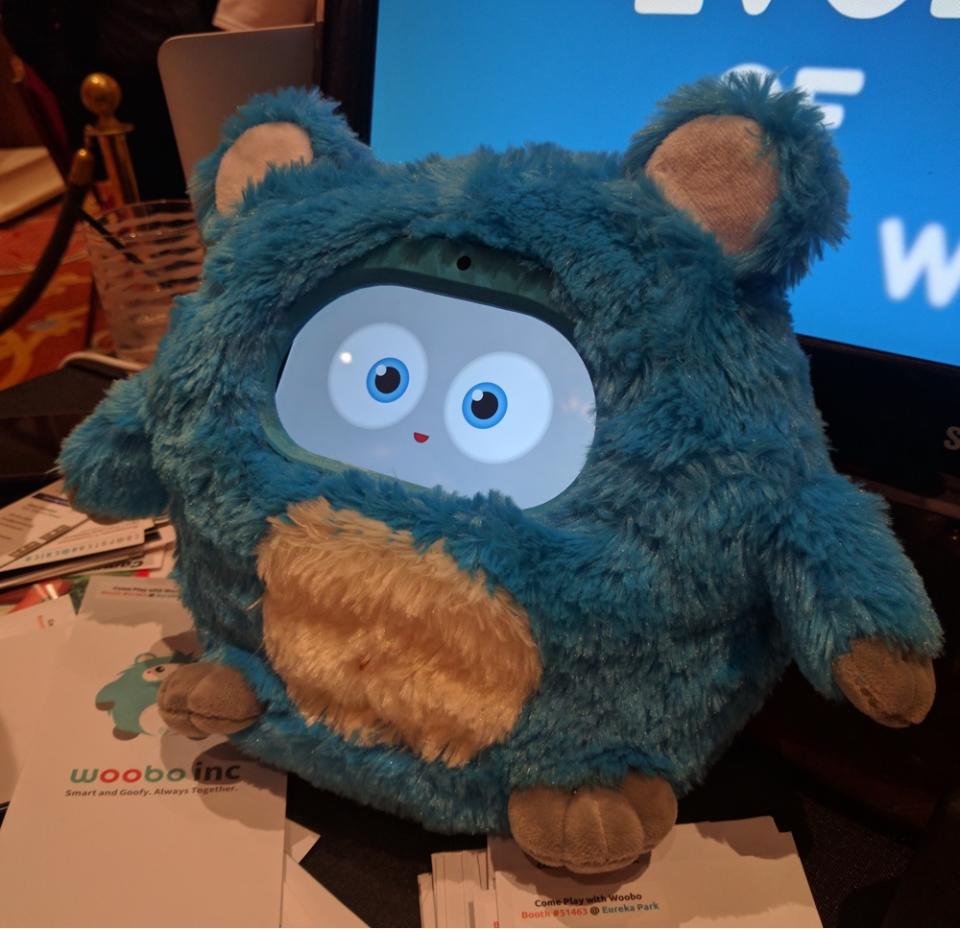What to expect at CES 2018, the biggest gadget show of the year

More than 170,000 people are headed to Las Vegas, woefully unable to deal with the traffic they’ll inflict, where they’ll spend most of a week in a gadget-addled, marketing-soaked haze. Why? CES.
The convention formerly known as the Consumer Electronics Show (anybody calling it “the CES show” is welcome to leave this article) functions as the gadget universe’s annual meeting. Exhibitors both brag about what they’ve done over the past year and show off their hardware, apps and services that they plan to bring to market over the next year.
Here’s what this year’s show is likely to bring.
TVs again — of course
The television business has spent the past several years trying to fix the problem it created by popularizing HDTV after its CES 1998 debut: How do you sell a new TV to somebody when high-def looks pretty great already?
3-D TV was not the answer, but UHD (Ultra High Definition, also called 4K for its nearly 4,000 pixels of horizontal resolution) has become HD’s successor despite a continued relative lack of content. The past two years have seen UHD make a better case for itself by adding HDR, short for “high dynamic range” color and brightness.
So now what? Expect more boasting over whose HDR-enhanced colors are brighter, a continued battle for screen supremacy between LED-backlit LCDs and ultra-thin but expensive OLED sets, more integration of streaming-media services, and maybe hardware integrating over-the-air “ATSC 3.0” tuners that can receive UHD broadcasts (and more-reliable HD broadcasts) over that just-finalized standard.
Alexa, Google Assistant and Siri walk into a bar…
The big surprise of last year’s CES was how successful Amazon (AMZN) has been in getting random smart-home gadgets to operate with its Alexa personal-assistant app. Alexa and the lineup of Echo smart speakers that host her/it have become the default interface to the (sorry, buzzword) Internet of Things.
Google (GOOG, GOOGL) has since done sufficiently well with its Google Home smart speakers — it announced Friday that it’s sold more than one of these devices each second since October — so we should see many bilingual “IoT” gadgets that can be controlled through either personal assistant.

That leaves Apple (AAPL) somewhat behind, with its own HomePod Siri smart speaker delayed past the holidays. How threatened does Apple feel? Friday afternoon, a company rep sent an unsolicited pitch to check out the HomeKit-compatible gear on display at CES, something that Apple PR almost never does.
You won’t, however, see Apple itself on the show floor. The company makes a point of not exhibiting at events it doesn’t run.
Smarter, greener transportation
CES might not seem like the ideal place to hide an auto show, considering that the North American International Auto Show happens in Detroit the week after. But over the past decade, an increasing number of carmakers have set up shop in Las Vegas to tout their more tech-intensive vehicles. Think connected cars, self-driving cars, electric cars, or combinations of the above.
For example, Lyft will be offering rides in autonomous vehicles during the show. Spoiler alert: Between the line to get a seat in one of these vehicles and the usually-horrible CES traffic, it will probably be faster to walk or bike — especially if you can use one of the increasing variety of electrically-assisted “e-bikes” set to debut at the show.
A stage for tech policy
Because this show is put on by a trade group across the Potomac River from Washington, the Consumer Technology Association, CES always brings a large contingent of politicians who sometimes make news. Three years ago, at the show, then Federal Communications Commission Tom Wheeler announced in an onstage interview that he would support strong net-neutrality rules.

Wheeler’s successor Ajit Pai was supposed to make his own appearance at CES 2018 but backed out last minute. Recode’s Tony Romm reported that the FCC chairman had received enough death threats to be persuaded to cancel; an FCC spokesman declined to comment on security issues.
CES 2018 will still, however, feature plenty of policy banter on such issues as the rules of the road for self-driving cars, protecting privacy and smart cities.
People still buy computers
The last several years of CES have featured an increasing amount of exhibit space devoted to wearable gadgets of one sort or another — from activity-tracking smartwatches to the face-borne computers that are virtual-reality headsets — but the show remains the one big get-together for the non-Apple computer industry in the U.S.
Between Microsoft (MSFT) Windows 10 and Google’s Chrome OS, manufacturers now have two good, touch-capable operating systems to craft machines around. The resulting crop of touchscreen, two-in-one devices that function as standard laptops or fold up for use as a tablet has no parallel in the Mac universe.
A CES constant: #fail
Because so much of the stuff on display at CES has yet to survive customer interactions, there are very good odds that a lot of it won’t work. Some will fail during flashy/tacky onstage demos, others will never make it to market, and still more will hit stores and fail to find any buyers.
This show is supposed to send the message that tech companies know the products of the future and will soon have them on sale, but flops offer a more useful reminder: Sometimes, they’re just as confused as we are.
More from Rob:
Your pay-TV rate might be increasing — here’s what you can do about it
2018 tech forecast: Expect more angst about privacy and net neutrality
Email Rob at [email protected]; follow him on Twitter at @robpegoraro.
